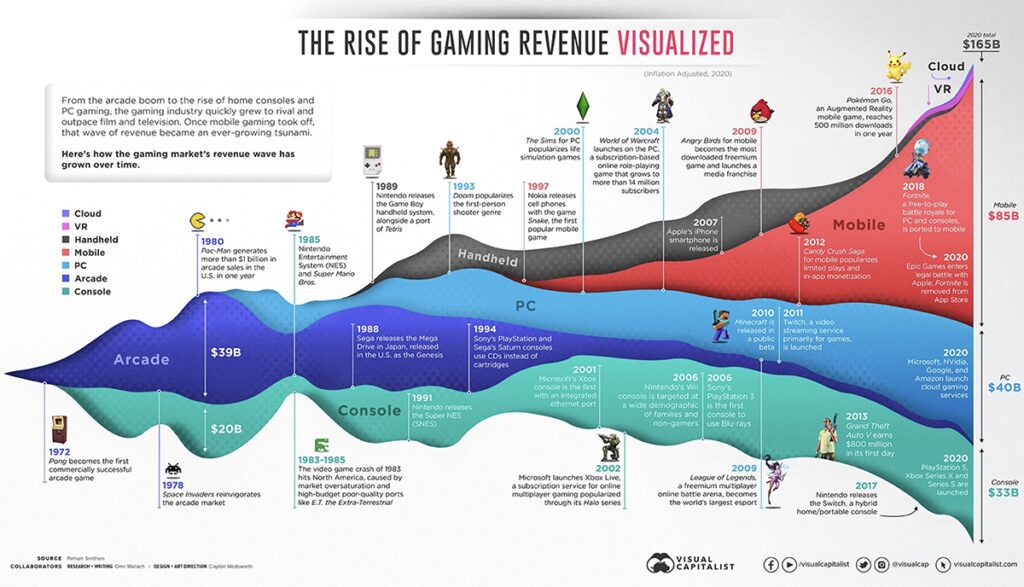The evolution of game graphics has been significant since the early days of basic shapes on black and white screens in the 1950s and 60s. Advancements in technology allowed game developers to create more detailed and colorful graphics in the mid-80s with the introduction of 8-bit consoles. The 16-bit era brought a major leap forward in game graphics with more processing power and the 3D revolution began in the mid-90s with 32/64-bit consoles. Today, game graphics have reached new heights of realism and visual fidelity with current generation consoles. Advancements such as ray tracing and artificial intelligence will lead to even more advanced graphics in the future.
The Evolution of Game Graphics: How Far We’ve Come in Game Development
Game development has come a long way since its inception. From the basic pixelated graphics of the early days of gaming, to the photo-realistic graphics of today’s games, the evolution of game graphics has been remarkable. This article will explore the history of game graphics, the technological advancements that have driven their evolution, and what the future holds for game developers and gamers alike.
The Early Days
When video games were first invented in the 1950s and 60s, they had little in the way of graphics. The earliest games consisted of basic shapes on a black and white screen, such as the classic game of Pong. These early games were played on devices like the Magnavox Odyssey and the Atari 2600.
As technology advanced, so too did game graphics. In the mid-80s, the introduction of 8-bit consoles like the Nintendo Entertainment System (NES) allowed game developers to create more detailed and colorful graphics. These games still had a pixelated look, as the number of pixels that could be used for each character or object was still limited.
The 16-Bit Era
The 16-bit era, which began with the release of consoles like the Sega Genesis and Super Nintendo Entertainment System (SNES) in the early 90s, brought with it a major leap forward in game graphics. With more processing power, game developers were able to create more detailed characters and environments. Games like Super Mario World and Sonic the Hedgehog showcased the capabilities of these consoles with colorful and vibrant graphics.
The 3D Revolution
The release of 32/64-bit consoles like the Sony PlayStation and Nintendo 64 in the mid-90s marked the beginning of the 3D revolution in game graphics. With the ability to render 3D objects and environments, game developers could create more realistic and immersive game worlds. Games like Tomb Raider and Super Mario 64 were early examples of what could be achieved with 3D graphics.
As technology continued to improve, so too did the quality of 3D graphics in games. The release of the Xbox and PlayStation 2 in the early 2000s brought even more advanced graphics capabilities to consoles. Games like Halo: Combat Evolved and Grand Theft Auto III showcased realistic environments and characters with advanced lighting and texture effects.
The HD Era
The release of high-definition (HD) consoles like the Xbox 360 and PlayStation 3 in the mid-2000s brought yet another leap forward in game graphics. With more processing power and the ability to render more polygons and textures, game developers could create even more realistic and detailed environments and characters. Games like Call of Duty: Modern Warfare and Uncharted: Drake’s Fortune demonstrated the capabilities of these consoles.
The Present and Future
Today, game graphics have reached new heights of realism and visual fidelity. The release of current generation consoles like the PlayStation 4 and Xbox One has allowed game developers to create highly-detailed game worlds that rival those of Hollywood movies. Games like Horizon Zero Dawn and Red Dead Redemption 2 showcase the latest advancements in game graphics.
As technology continues to improve, game graphics will only become more advanced. The introduction of new technologies like ray tracing and artificial intelligence (AI) will allow game developers to create even more realistic and immersive game worlds. We can expect to see even more advanced graphics in the next generation of consoles.
Conclusion
The evolution of game graphics has been a remarkable one. From the basic pixelated graphics of the early days of gaming, to the photo-realistic graphics of today’s games, the advancements in technology have driven their evolution. As technology continues to improve, game graphics will only become more advanced, allowing game developers to create even more realistic and immersive game worlds. The future of game graphics looks bright indeed.
